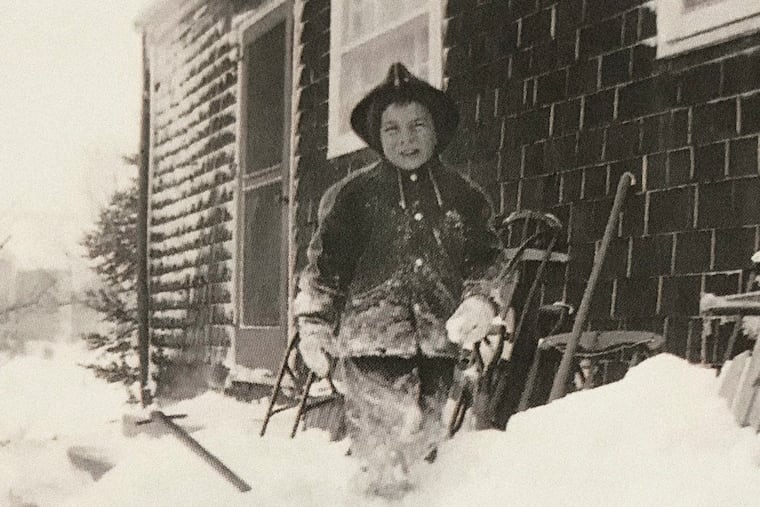The national snow master issues a storm warning as he steps down as weather service chief
"It turned the world white before my eyes," Louis Uccellini says of his lifelong fascination with snow. His long-term outlook for the world's climate isn't quite as magical.

In 40-plus years in government, Louis W. Uccellini has seen profound changes, including the climate’s. Uccellini, who grew up on Long Island and received his doctorate from the University of Wisconsin, has announced he will retire in January as director of the National Weather Service.
Along the way he became one of the nation’s foremost authorities on winter storms, coauthor of a seminal treatise, Northeast Snowstorms. For all his fascination with snow, that’s not what first got his attention, as he relates in this Inquirer interview. Responses have been edited for brevity and clarity.
Do you have a first weather memory?
Hurricane Carol in late August 1953 when I was 4 years old. It struck eastern Long Island as a Category 3 storm. My mother was very anxious as she also experienced the Long Island/New England Express Hurricane in 1938 and she recounted how bad these storms could be as we hunkered down in our house.
Winter-storm research obviously has been a significant part of your career. What first fired your interest?
I was always fascinated by snow and got excited about it when it turned the world white before my eyes. I remember wondering why the snow would not stick sometimes and why it was still snowing in New York City but raining over us. And the challenge of forecasting snow became more evident as many of the forecasts leading up to the snow event turned out to be wrong as the dreaded rain-snow line passed over us from south to north way too often. So I just wanted to know how the atmosphere worked to make this miracle of a snowstorm actually happen.
When was the last time you actually were able to “enjoy” a winter storm without any work interference?
I always enjoy a good snowstorm. Even now, if we are going to have a big storm that will directly affect where I live, I usually stay up very late, sometimes all night, and will report measurements to the local National Weather Service Forecast Office in Sterling, Va.
Do you have an all-time favorite storm?
From a career point of view, the winter storm of Jan. 21, 2016. Everything about my career culminated with that storm. The physical processes I did research on (gravity waves, jet streams, ocean moisture, and heat fluxes) all played important roles for this storm. And the models captured this storm seven days in advance so the forecasters could provide impact-based decision support services with extra confidence. We saw state emergency messages issued across the Mid-Atlantic and Northeast the day before the storm hit, so government agencies and people were prepared. My favorites as child were Dec. 10-13, 1960; Jan. 19-20, 1961; and Feb. 2-5, 1961. What a winter!
In my professional career in the Washington area, Feb. 18-20, 1979. I wound up writing five papers on this one and it was the heaviest snowfall I remember ever seeing — 5 to 6 inches per hour for 2 to 3 hours.
Did you ever seriously consider an entirely different profession?
I knew I wanted to be a meteorologist since first or second grade. My parents would tell the story of how I would marvel at the clouds and snow as early as 2 or 3.
What has been the most satisfying aspect of your career?
In my academic career, I was really enjoying myself learning the details of the science. The research experience at NASA/Goddard Space Flight Center was invaluable. What an amazing 11 years working there, the interactions, the insights gained, the papers written. It seemed like I was writing all the time. With the National Weather Service it has been my transition from research to operations and public service and the responsibilities that come with it.
What has been the most important development in atmospheric research during your career?
I contend that the application and improvement of numerical prediction models within the forecast process for reliable real-time weather, water, and climate predictions was one of the major intellectual and engineering/technology achievements of the 20th century.
What is the one forecast problem we probably won’t live to see surmounted?
I think it will take a decade or longer to address the precipitation challenges so we can advance our skill in predicting the intense historic rainfall across the scales.
What is one thing that you wish people understood about climate change?
Climate change is upon us. Climate change has altered weather and weather patterns around the globe, causing more extreme events than ever in recorded history. As a society, we need to work toward understanding the increasing vulnerability and related risks and the adaptation required to lessen the impacts of extreme weather. That includes addressing our nation’s infrastructure so it can withstand these powerful weather events, which will continue to get worse.
Why did you decide to retire now?
My family has made many sacrifices so that I could live out my childhood dream of being a meteorologist. It is time to rebalance and enjoy time with family and friends as I pursue reading, writing, and other activities that keep me connected to the natural wonders that have always fascinated me. I have accomplished what I set out to do as the director of the National Weather Service. Our forecasters are now providing impact-based decision support services — connecting forecasts and warnings to the improved decisions now being made for public safety in advance of extreme weather and water events.